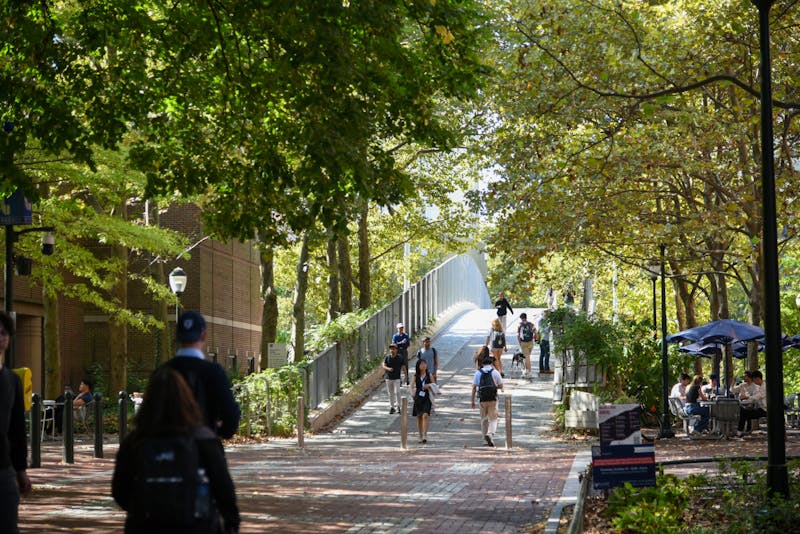With his calm, friendly demeanor, Mathematics Professor Dennis Deturck could ease almost any calculus student's anxiety about studying the frequently dreaded subject. And with a $2.2 million grant from the National Science Foundation, Deturck is developing methods that will not only make students feel more comfortable with math, but also aim to revolutionize the way they perceive the field. Heading a consortium that includes the Society for Industrial and Applied Mathematics, Villanova University and University City High School, Deturck and his colleagues initiated the project to help remedy what they and many educators nationwide consider a major problem with the way students are taught math. Too often, Deturck says, teachers depict math as an isolated subject. As a result, their students do not understand that scholars in a huge range of fields apply fundamental mathematical concepts to their studies. "Math is often taught as a collection of techniques and tricks," Deturck said. "We're trying to get students to internalize what they learn, and not just memorize it. "You can send students to read about how math is used in other fields, but you usually end up with, 'Is this on the final?' " Deturck added. "But if the student realizes that what is in calculus is on the physics exam, it makes learning the information more compelling." Deturck began implementing his ideas this summer in Penn's pre-freshman program. Deturck taught a rigorous course integrating mathematics with chemistry and physics. In the class, Deturck would introduce a mathematics concept and then Physics Professor Larry Gladney and Chemistry Professor Anthony Pietrovito would show how they use the concept in their respective fields. "In the beginning the students tended to see disciplines, rather than ideas," Gladney said. "We had to spend a lot of time convincing them that if you switch the labels, there's no difference." Before teaching the course, Deturck, Gladney and Pietrovito wrote a text to accompany the class. The professors put the book on the World Wide Web and Gladney says people around the world have contacted him to find out more about the project. Within the next few years, Deturck predicts that the University will offer many more courses that resemble the class he taught this summer. "Students will still take calculus, physics and chemistry, but the boundary lines will be a lot blurrier," Deturck said. "An economics professor might show up in a calculus class, either in person or in a multimedia way. "Or a student will have calculus at 11 o'clock and physics at 12 o'clock, but the professors would show up for both." Deturck and his colleagues are also trying to show that math is not confined to the classroom. He pointed to American Airlines as an example. The company employs 1,000 people who study how to maximize profitable routes and use equipment efficiently -- a practice that relies on math and saves the airline $1 billion every year. And Deturck hopes to take his students to Amtrak's control facility in Philadelphia to learn of other practical applications of mathematics. In one of Chemistry Professor Ponzy Lu's courses, students can watch on video how scientists use math when they conduct experiments to learn about DNA. By showing math's practical applications, Deturck says he hopes that students will gain a better appreciation for the field's influence on everyday life in the modern world. "It's like studying a hammer," Deturck said. "If you look at a hammer, you learn that it's used to pound in nails. But if you never build anything, studying that hammer isn't very gratifying."
The Daily Pennsylvanian is an independent, student-run newspaper. Please consider making a donation to support the coverage that shapes the University. Your generosity ensures a future of strong journalism at Penn.
DonatePlease note All comments are eligible for publication in The Daily Pennsylvanian.







